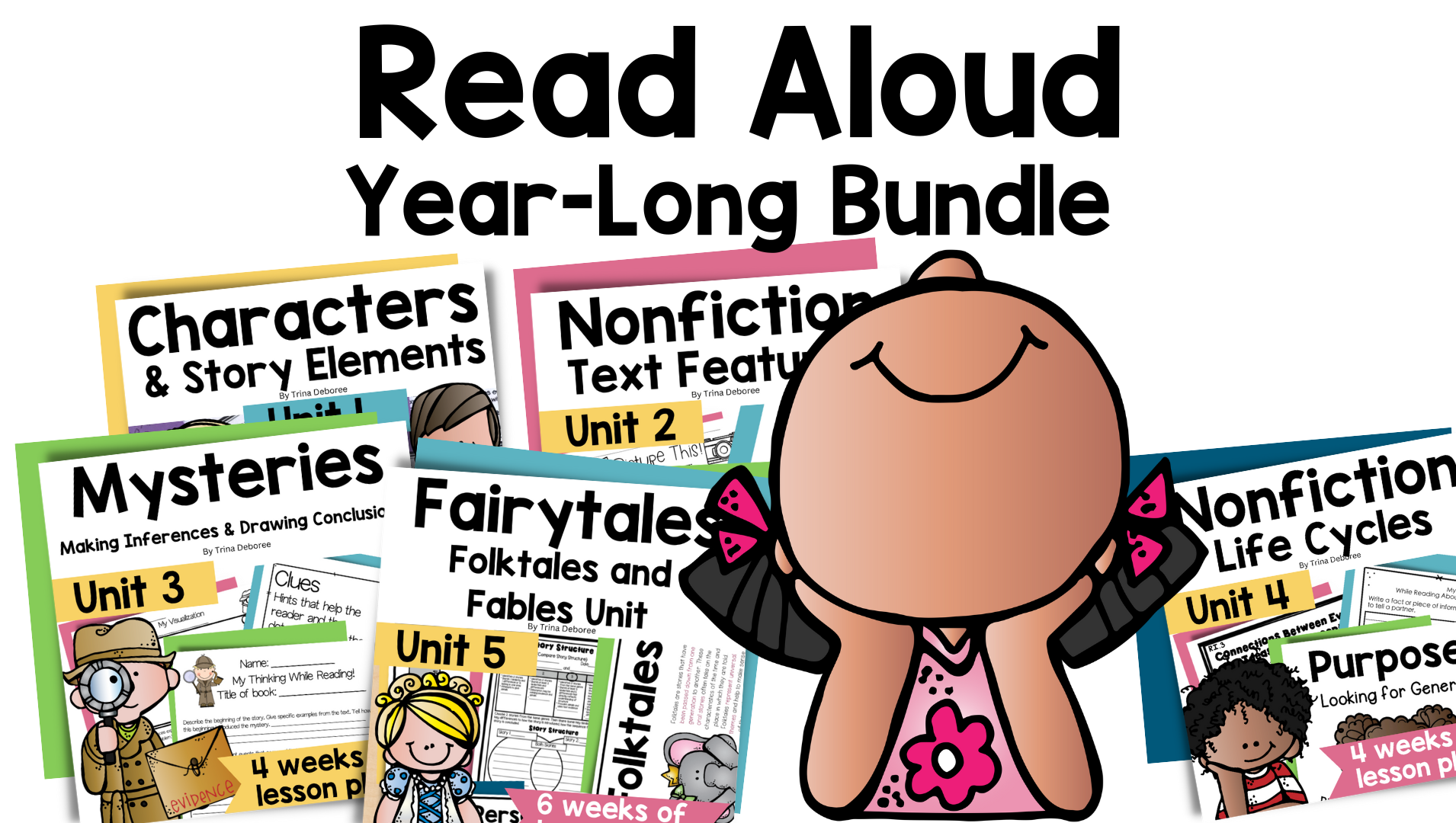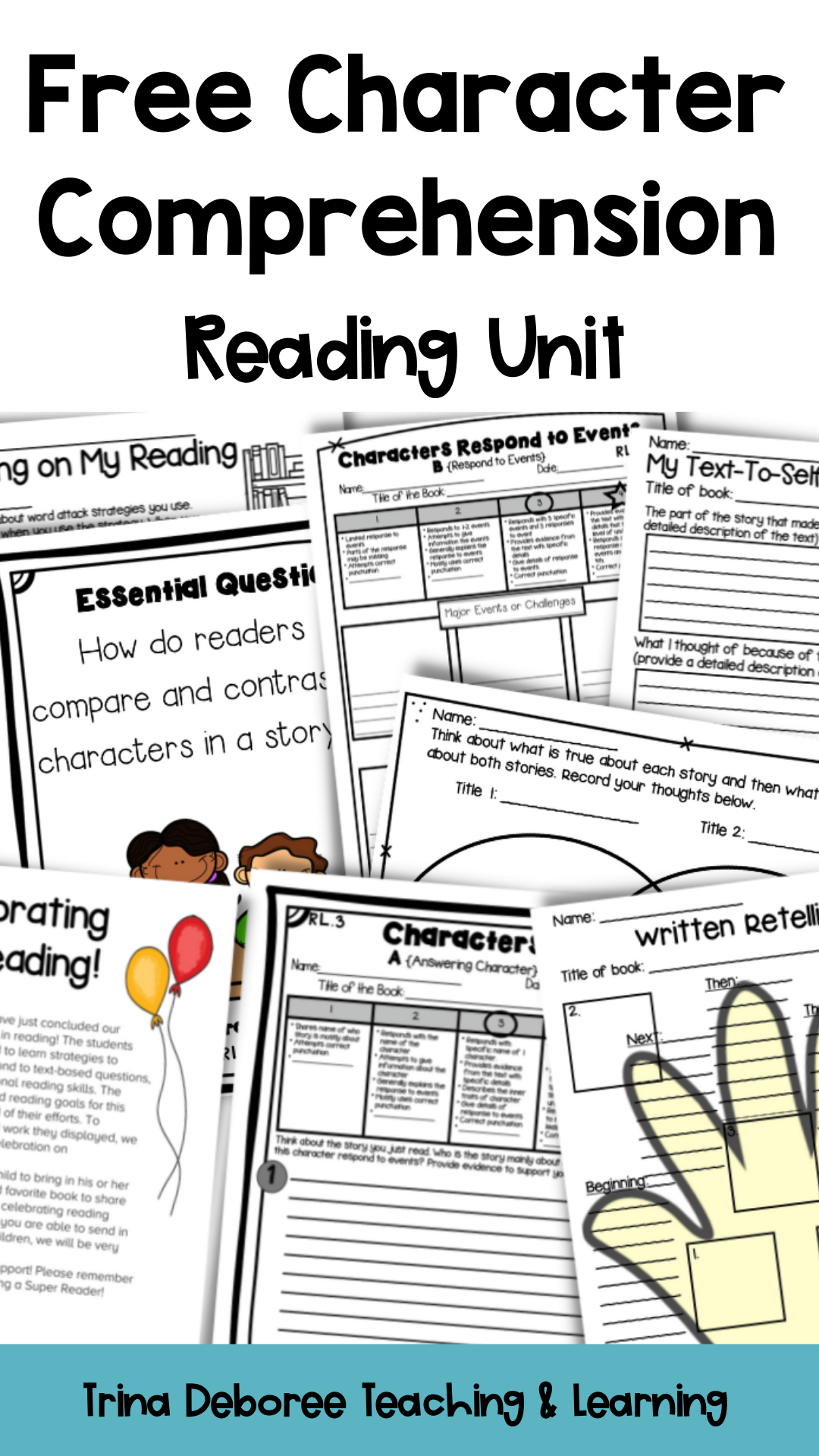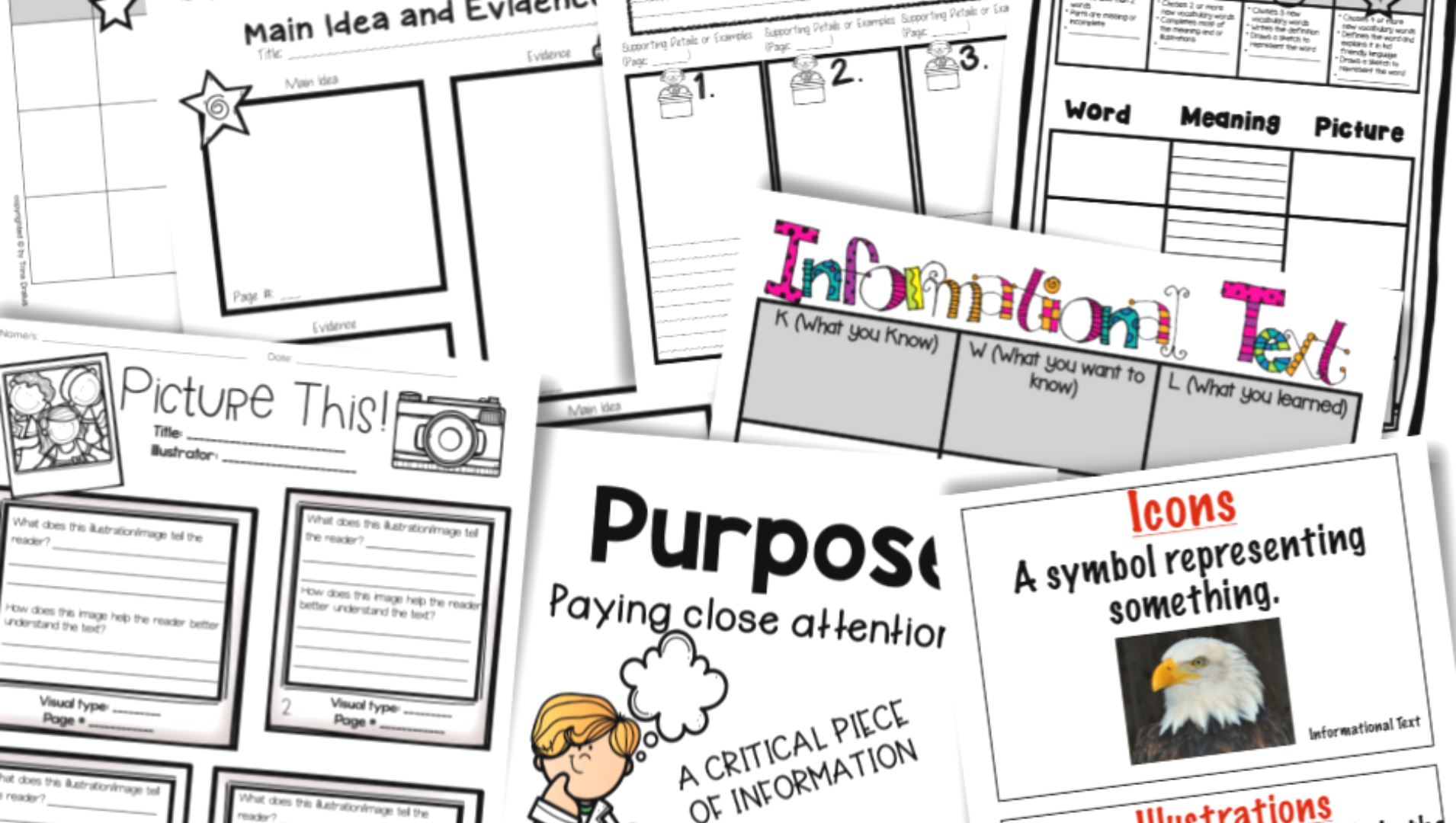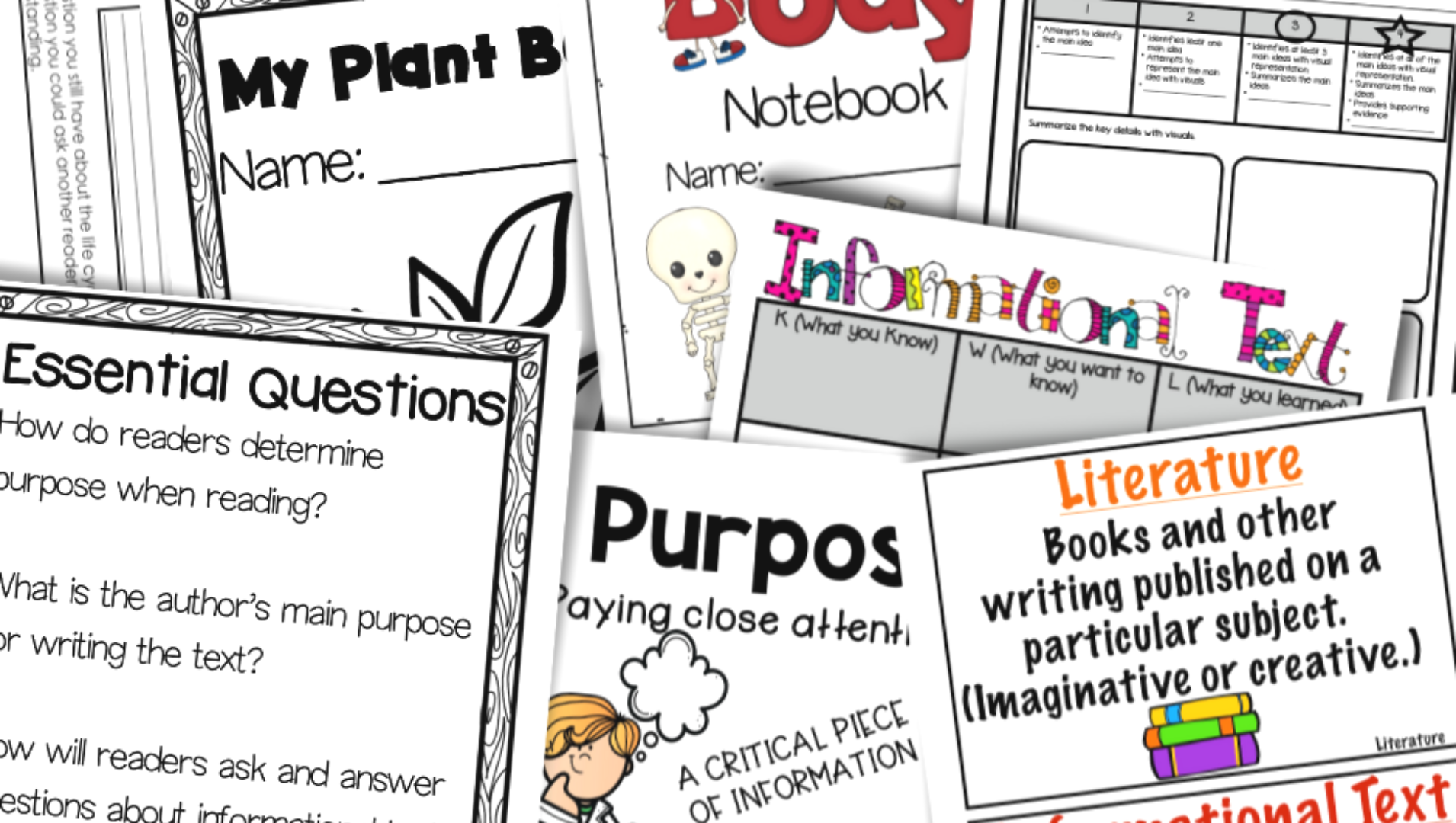OTT 225: 5 Intriguing Genre Studies to Strengthen Reading Comprehension in the 2nd Grade
Are your second graders struggling to comprehend what they read?
Are you tired of the same old comprehension questions that elicit only one-word answers? Do you want your students to take reading to the next level and also profoundly fall in love with reading? Keep reading or listening for five genre studies to pique your students' curiosity and strengthen their reading comprehension skills. Plus, your students will fall deeply in love with literature and informational text.
From mysteries to fairy tales, these genre studies will encourage your students to delve deeper into the text. So, buckle up and prepare for a wild ride through the literary world with these five intriguing genre studies for young readers. And don't worry; we will be looking at more than reading comprehension worksheets; we will be delving into fascinating books on essential events or using an old faithful favorite book or two along the way.
Overview of Genre Studies in 2nd Grade
Is your second-grader ready to take on the world of genre studies? Well, let me tell you, it's not as scary as it sounds! In fact, understanding genres is an excellent way for young learners to expand their reading comprehension and vocabulary.
One of the key components of genre studies in 2nd grade is learning to identify different types of texts. Whether it's a fairy tale or a biography, students can recognize the characteristics that make each genre unique. Not only does this help with comprehension, but it also exposes them to new words and phrases they might not have encountered before.
But wait, there's more! Second-graders will also learn how authors use language and structure to convey their messages. From descriptive language in poetry to plot twists in mysteries, students will discover how writers can manipulate their craft for maximum impact.
Fiction: Character and Story Elements
First up is the wonderful world of fiction, focusing on characters and story elements. This genre is a creative way to teach literature standards while encouraging a love of reading.
Kids fall in love with characters like Trixie and Henry and Mudge! Reading with expression makes the interactive read-aloud time fun and meaningful. The animated expression also helps model strong fluency skills.
It's always early enough to start honing your storytelling skills; the second grade is the perfect time to do it! Fiction: Character and Story Elements is a genre study that will have your little ones crafting their tales in no time. But what's the best way to approach this learning at such a young reading level? The answer lies in small groups.
Gather some pals and dive into an exciting world of fun characters. Children can easily understand how characters are developed, and plots unfold by breaking down story elements into bite-sized chunks. Reading comprehension becomes a breeze when students can discuss their observations with peers, building confidence along the way.
And let's not forget about the fun factor! Fiction: Character and Story Elements is a creative outlet for kids that encourages them to use their imaginations while learning critical literary concepts.
To help you dive into Reading Workshop and start your year with a strong focus on reading comprehension, I am offering the first Unit- Describe Character, Setting, & Major Events in a Story Interactive Read Aloud for FREE! This unit is 1 of 5 units inside my bundle Interactive Read Aloud Lesson Plans Mega Bundle: Reading Units Read Aloud 2nd.
This unit focuses on Mo Willems Trixie character through all three Knuffle Bunny books and Cynthia Rylant's characters- Henry and Mudge, and more!
Nonfiction: Analyzing Text Features and Structures
The second unit in the Interactive Read Aloud Lesson Plans Mega Bundle: Reading Units Read Alouds 2nd is a closer look at Nonfiction focusing on Text Features and Structures. This unit can be used with any nonfiction text.
It's time for some nonfiction fun for 2nd graders! In Unit Two, we will learn about analyzing text features and structures. Now, don't let those big words scare kids. You will help kids figure out the main idea of a comprehension passage by looking at things like headings, subheadings, pictures, and captions.
First up, teach kids about headings. Headings are like mini titles that tell us what the section is about. They give us a clue about what to expect in the upcoming paragraphs. Next are subheadings smaller than headings but still provide crucial information on specific aspects of the discussed topic. So model for kids how to keep their eyes peeled for those little guys because they'll help them keep track of what they are reading.
Now onto pictures and captions!
The best part of using actual nonfiction text rather than an informational reading passage? Kids love books! Plus, you can choose a book that is on a higher level and model how to comprehend Nonfiction. The good news is there is a great way to use graphic organizers inside Unit Two that will help kids keep track of their thinking after your read-alouds.
Fiction: Mysteries Developing Critical Thinking Skills
Attention all 2nd-grade teachers! Are you looking for a fun and engaging way to develop your student's critical thinking skills? Look no further than the world of mystery fiction! By incorporating short stories and chapter books into your curriculum, you can help young minds develop their problem-solving abilities and strengthen their ability to think critically.
Mystery fiction is an excellent genre for developing critical thinking skills because it challenges readers to solve complex puzzles and piece together clues. As students read these stories, they are forced to think outside the box, consider different perspectives, and make connections between seemingly unrelated pieces of information. This mental exercise strengthens their analytical skills and encourages them to approach problems creatively.
One great thing about using mystery fiction in the classroom is that so many fantastic options are available. This is by far one of my favorite genres to teach. Kids will love it! I've had classes fall in love with mysteries and then turn EVERYTHING into a who dun it mystery! So fun!
In the Interactive Read Aloud Lesson Plans Mega Bundle: Reading Units Read Aloud 2nd, Unit Three is Based on Mysteries, AND you get a Classroom Mystery as a bonus!
Nonfiction: Making Connections to Science
Nonfiction: Making Connections to Science genre study for 2nd graders in the classroom can be a real head-scratcher. As teachers, we want our little learners to expand their knowledge and grow their comprehension skills, but let's face it - science can sometimes be as confusing as a Rubik's cube. But fear not, my fellow educators! With a few tips and tricks up your sleeve, you'll have your students answering questions about the scientific world like smarty-pants in no time.
First, choose nonfiction books that are engaging and relatable to your students. Look for texts that incorporate real-life scenarios or illustrations they can easily connect with. You could focus on your science standards- like life cycles and go from there. This makes integrating science into your reading block that much easier. This is the perfect way to cover multiple subjects. (Read more about covering science in your reading block here.) After all, what kid doesn't love learning about the life cycle of a butterfly or the life cycle of a chicken? Secondly, introduce new vocabulary words related to the topic at hand.
This unit covers follow-up questions, life science, and more!
Fiction: Fairytales, Folktales, and Fables
As a second-grade teacher, you're probably well aware of the magical powers of fairy tales, folktales, and fables. These great books are entertaining and teach valuable lessons through their central message. Yes, even little kids can learn something from stories that involve talking animals and magic spells.
However, it's important to note that these genres are different. Fairy tales usually involve supernatural elements like witches or fairies and often end with "happily ever after." Folktales come from different cultures and have been passed down orally for generations. They may have similar themes as fairy tales but are more grounded in reality. Fables use animal characters to teach a moral lesson – think Aesop's famous "The Tortoise and the Hare."
Introducing your students to these genres early on will open up a world of imagination and learning opportunities.
Conclusion:
In conclusion, exploring different genres can be a fun and effective way to improve reading comprehension skills in the 2nd grade. Whether diving into a mystery novel or exploring a fantasy world, each genre offers unique opportunities for young readers to expand their vocabulary, deepen their understanding of plot and character development, and cultivate a love of storytelling.
Want to save over 50% on the entire year of Interactive Read Aloud Lessons focusing on the genres above?










